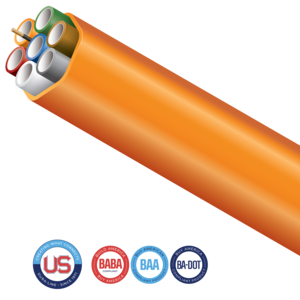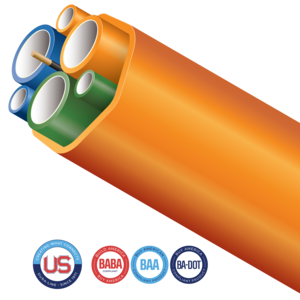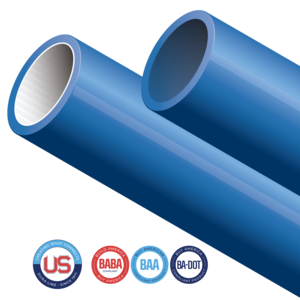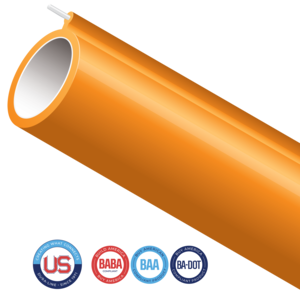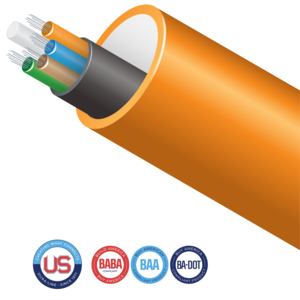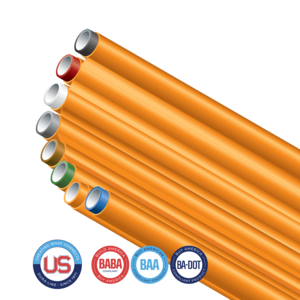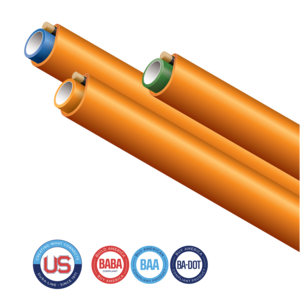As transportation authorities, DOTs are in a unique position to serve the public with innovative approaches to infrastructure upgrades and expansion. With plans and federal funding moving forward, it will be imperative for DOTs to think outside the box to maximize benefits to their state and communities, including bridging the digital divide.
While not necessarily in scope for a typical transportation project, DOTs have the power to advance the nation’s digital ambitions. Here’s how they can capitalize on their existing advantages – chiefly crucial rights of way – during planned expansions and upgrades.
Enable healthier competition and lower costs for customers
DOTs, internet service providers (ISPs), and manufacturers share common ground in serving the public, and they can do so collaboratively to facilitate even greater wins for their communities. By installing additional conduits for digital communications as part of regular highway infrastructure projects and making them available on an open access basis, DOTs can play a key role in helping to eliminate monopolies.
This increased competition can then incentivize greater choice in connectivity products and pricing, and facilitate better customer service for communities that would otherwise lack meaningful options. With multiple pathways in a single structure, FuturePath from Dura-Line provides a ready-made open-access network with vacant MicroDucts for future capacity expansion and physical separation between different operators' fiber, all for a single installation cost.
Collaboratively Implement Dig Once
DOTs can also act on Dig Once aims emphasized by federal infrastructure policies. Because of the high cost of building and maintaining networks in remote areas, broadband service to these communities often remains limited to a single provider or entirely unserved.
But as DOTs lead the development of transportation infrastructure in their states, they have immense power to facilitate the expansion of broadband connectivity by coordinating large public works projects, and can work with ISPs and utilities to narrow the digital divide.
Individual states have the flexibility to implement Dig Once principles through a range of definitions across the country, including:
- The obligation for public entities to install broadband ducting during construction projects for lease to ISPs
- Obligations for ISPs to disclose joint trenching opportunities via state broadband offices
- Online portals that notify ISPs of state-led highway construction projects to facilitate trench sharing
Many states around the country are also hosting online portals that make intents to dig publicly available so that other operators can plan to lay broadband infrastructure at the same time. This coordination can also reduce construction costs for ISPs and minimize environmental impacts from additional digging.
And as sustainability becomes a critical priority, increasingly common technologies like electric vehicle charging stations present a natural installation point for broadband connectivity. Together with ISPs and utilities, DOTs can also formalize the utilidors that will allow for seamless connections to the renewable grid of the future.
Deploy fiber in innovative ways to streamline and expand current capabilities
While DOTs already have considerable capital investments in ITSs, the future will require innovative thinking – many states are already planning to accommodate new technologies that will become non-negotiables for modern life. Fiber’s immense capacity will be necessary to enable these innovative technologies. Here are a few examples of how states are building a future driven by fiber broadband connectivity:
- Roadside fiber networks that will enhance and expand existing roadway monitoring and allow for faster emergency communications
- Autonomous vehicle readiness
- Distributed acoustic sensing for safety monitoring and asset protection
With multiple pathways, MicroTechnology from Dura-Line offers the tools to make these revolutionary possibilities and more a reality: increased fiber capacity, future-proofing, scalability, and cost savings over a reduced footprint. Ready to learn even more about how DOTs can deploy fiber to maximize their existing advantages? Read additional case studies and more here.
For more information, check out our joint webinar with Corning Optical Communications, where Dura-Line's MicroTechnology expert Sam Erekson joins panelists from the Arizona Department of Transportation, Corning, and Kimley-Horn to explore the innovative and public-serving applications of fiber along roadways.



